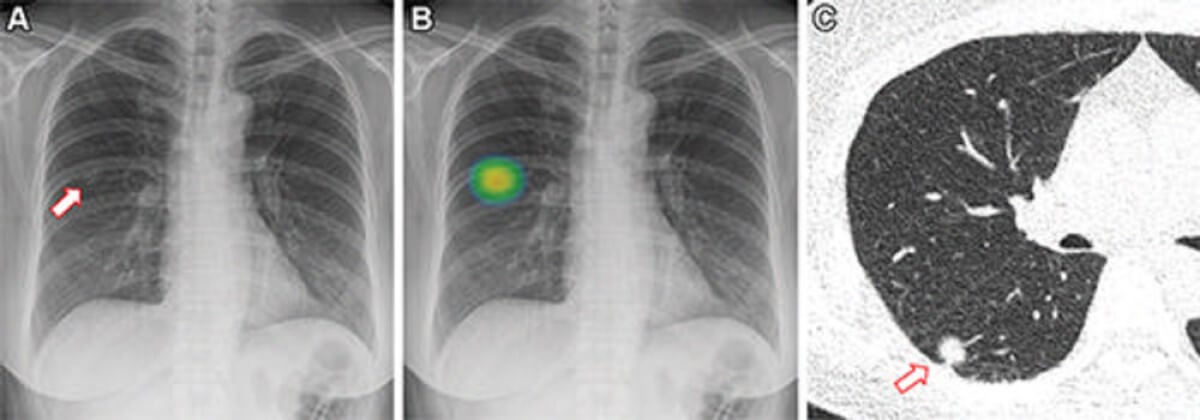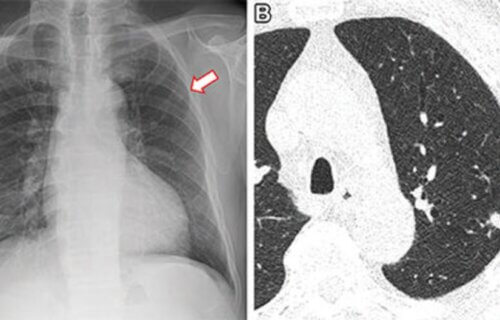OAK BROOK, Ill. – Artificial intelligence is more than twice as effective at screening patients for lung cancer than human doctors are, a new study reveals. According to researchers in South Korea, the AI technique is more sensitive, making it much less likely that the system misses cases that need immediate treatment.
It could improve survival rates for one of the deadliest forms of the disease. In a real-world setting, machine learning-based software significantly boosted identification of lung nodules on chest X-rays. The abnormal growths commonly form after infections. In rare cases, they are a sign of cancer.
“Detecting lung nodules, a primary finding of lung cancer, is one of the crucial tasks in chest X-rays,” says study co-author Jin Mo Goo, M.D., Ph.D., from the Department of Radiology at Seoul National University Hospital, in a media release. “Many studies have suggested that AI-based computer-aided detection software can improve radiologists’ performance, but it is not widely used.”

AI detected twice as many lung cancer cases
The results published in the journal Radiology show that artificial intelligence can be a powerful tool, especially when hospitals are experiencing a high volume of cases. Lung cancer is too often diagnosed after it has spread throughout the body. This is because there are few initial symptoms.
The disease will kill over 127,000 people in the U.S. in 2023, according to estimates from the America Cancer Society. The findings for this new study are based on around 10,500 people who underwent chest X-rays at a screening center in South Korea between June 2020 and December 2021.
“As our trial was conducted with a pragmatic approach, almost all enrolled participants were included, which is a real clinical setting,” Dr. Goo says.
The project took into account age, sex, and past history of lung cancer for each patient. One in nine (11%) were current or former smokers. They were randomly and evenly divided, with analysis of one group’s X-rays being aided by AI.
In 0.59 percent of cases, the system detected lung nodules requiring action, compared to 0.25 percent of the others whose images were reviewed only by radiologists. Overall, lung nodules were identified in two percent of the patients. There were no differences in false-positive rates.
“Our study provided strong evidence that AI could really help in interpreting chest radiography. This will contribute to identifying chest diseases, especially lung cancer, more effectively at an earlier stage,” Dr. Goo concludes.
The study also suggests that AI works consistently across different populations, even for those with diseased or postoperative lungs.
AI has previously been shown to predict bowel diseases, Alzheimer’s, heart attacks and dementia.
South West News Service writer Mark Waghorn contributed to this report.

